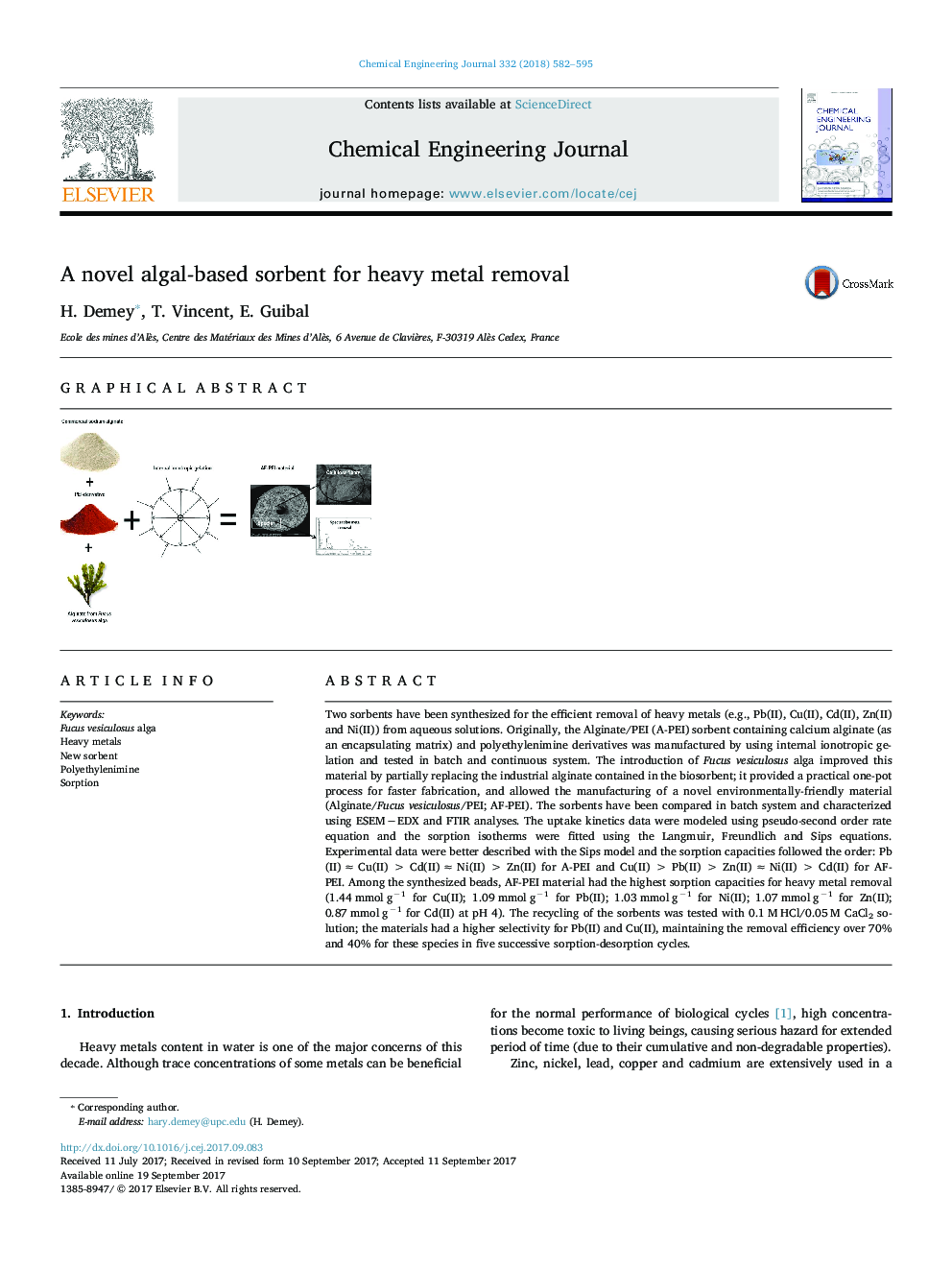| Article ID | Journal | Published Year | Pages | File Type |
|---|---|---|---|---|
| 6464918 | Chemical Engineering Journal | 2018 | 14 Pages |
â¢Two sorbents have been manufactured for heavy metal removal.â¢The introduction of F. vesiculosus alga into the sorbent enhances the metal binding.â¢Cellulose fibers of algae reinforce the mechanical strength of the beads.â¢The sorbents can be used at least for five sorption-desorption cycles.â¢The sorbents have a higher selectivity for Pb and Cu over Cd, Zn, and Ni.
Two sorbents have been synthesized for the efficient removal of heavy metals (e.g., Pb(II), Cu(II), Cd(II), Zn(II) and Ni(II)) from aqueous solutions. Originally, the Alginate/PEI (A-PEI) sorbent containing calcium alginate (as an encapsulating matrix) and polyethylenimine derivatives was manufactured by using internal ionotropic gelation and tested in batch and continuous system. The introduction of Fucus vesiculosus alga improved this material by partially replacing the industrial alginate contained in the biosorbent; it provided a practical one-pot process for faster fabrication, and allowed the manufacturing of a novel environmentally-friendly material (Alginate/Fucus vesiculosus/PEI; AF-PEI). The sorbents have been compared in batch system and characterized using ESEMâEDX and FTIR analyses. The uptake kinetics data were modeled using pseudo-second order rate equation and the sorption isotherms were fitted using the Langmuir, Freundlich and Sips equations. Experimental data were better described with the Sips model and the sorption capacities followed the order: Pb(II) â Cu(II) > Cd(II) â Ni(II) > Zn(II) for A-PEI and Cu(II) > Pb(II) > Zn(II) â Ni(II) > Cd(II) for AF-PEI. Among the synthesized beads, AF-PEI material had the highest sorption capacities for heavy metal removal (1.44 mmol gâ1 for Cu(II); 1.09 mmol gâ1 for Pb(II); 1.03 mmol gâ1 for Ni(II); 1.07 mmol gâ1 for Zn(II); 0.87 mmol gâ1 for Cd(II) at pH 4). The recycling of the sorbents was tested with 0.1 M HCl/0.05 M CaCl2 solution; the materials had a higher selectivity for Pb(II) and Cu(II), maintaining the removal efficiency over 70% and 40% for these species in five successive sorption-desorption cycles.
Graphical abstractDownload high-res image (105KB)Download full-size image
